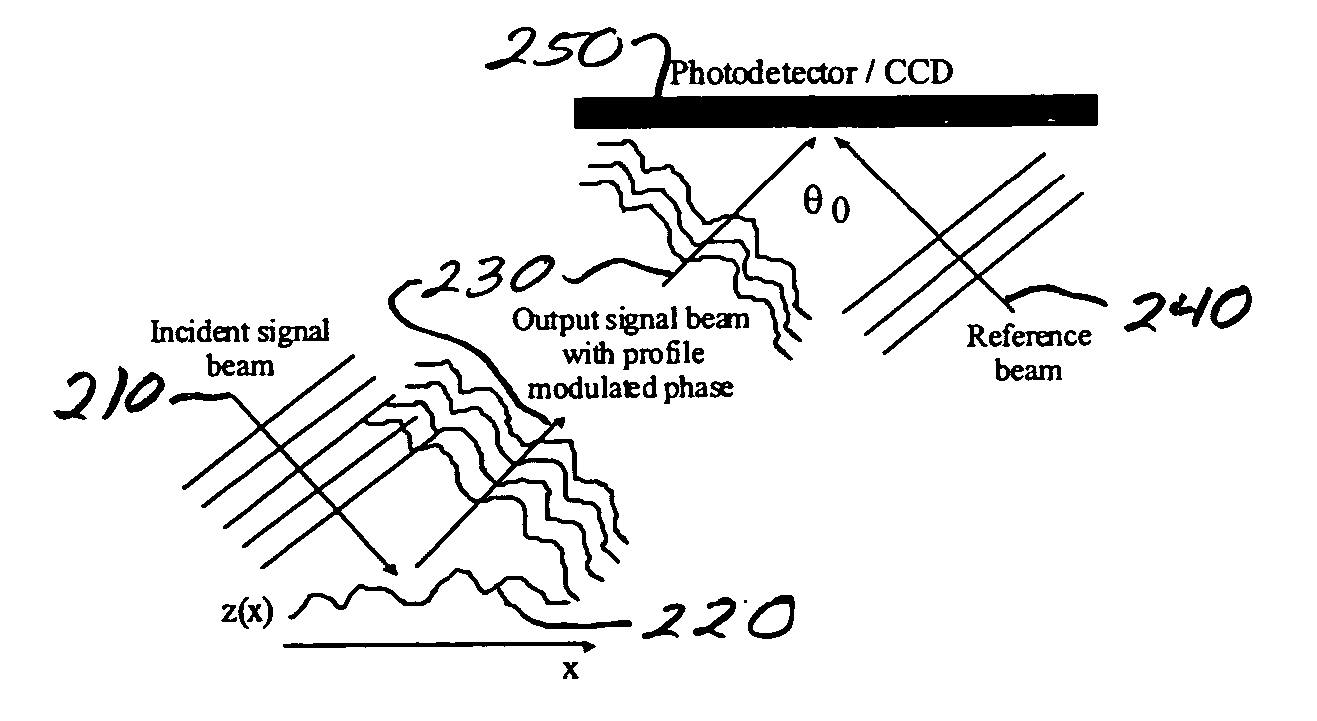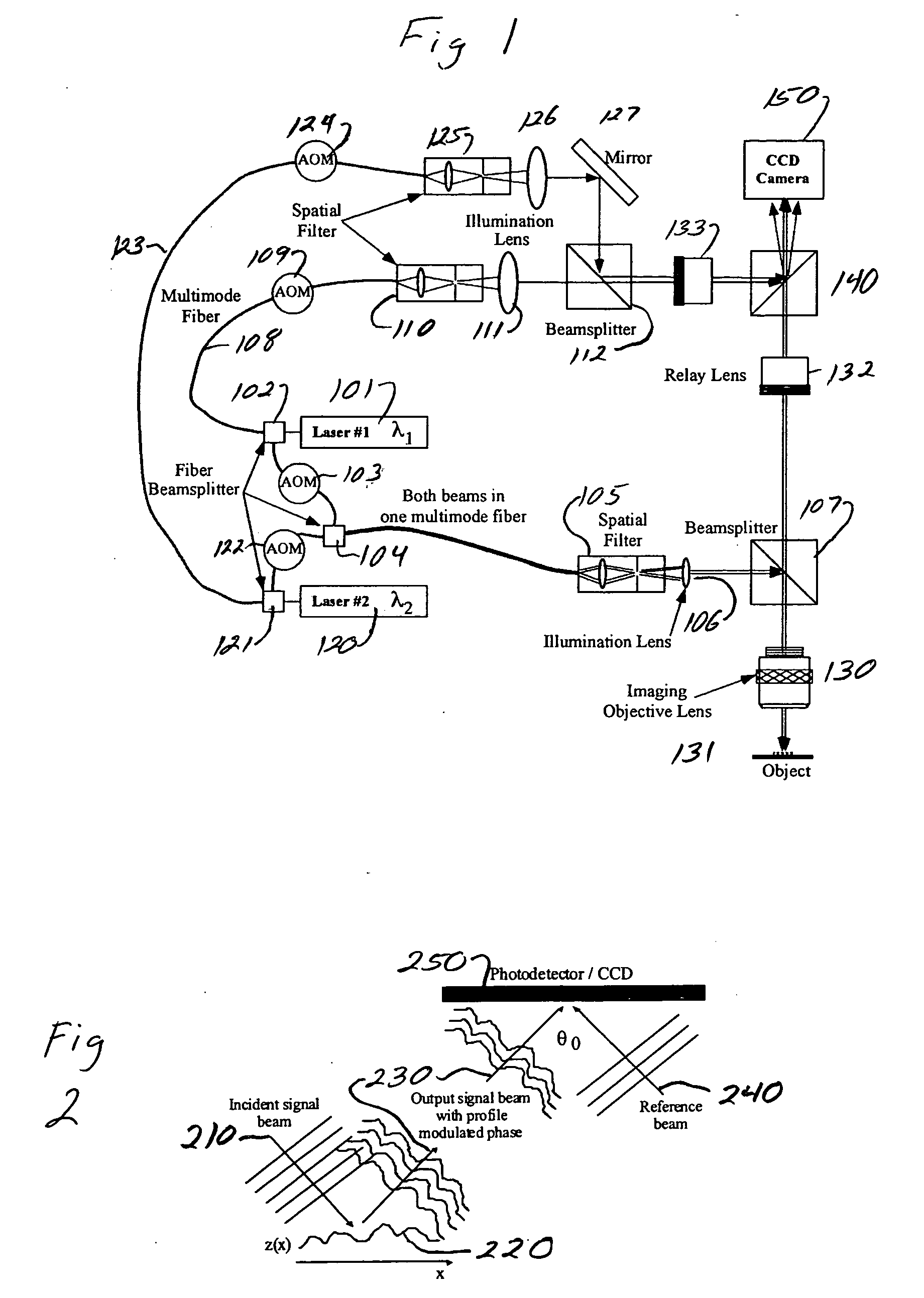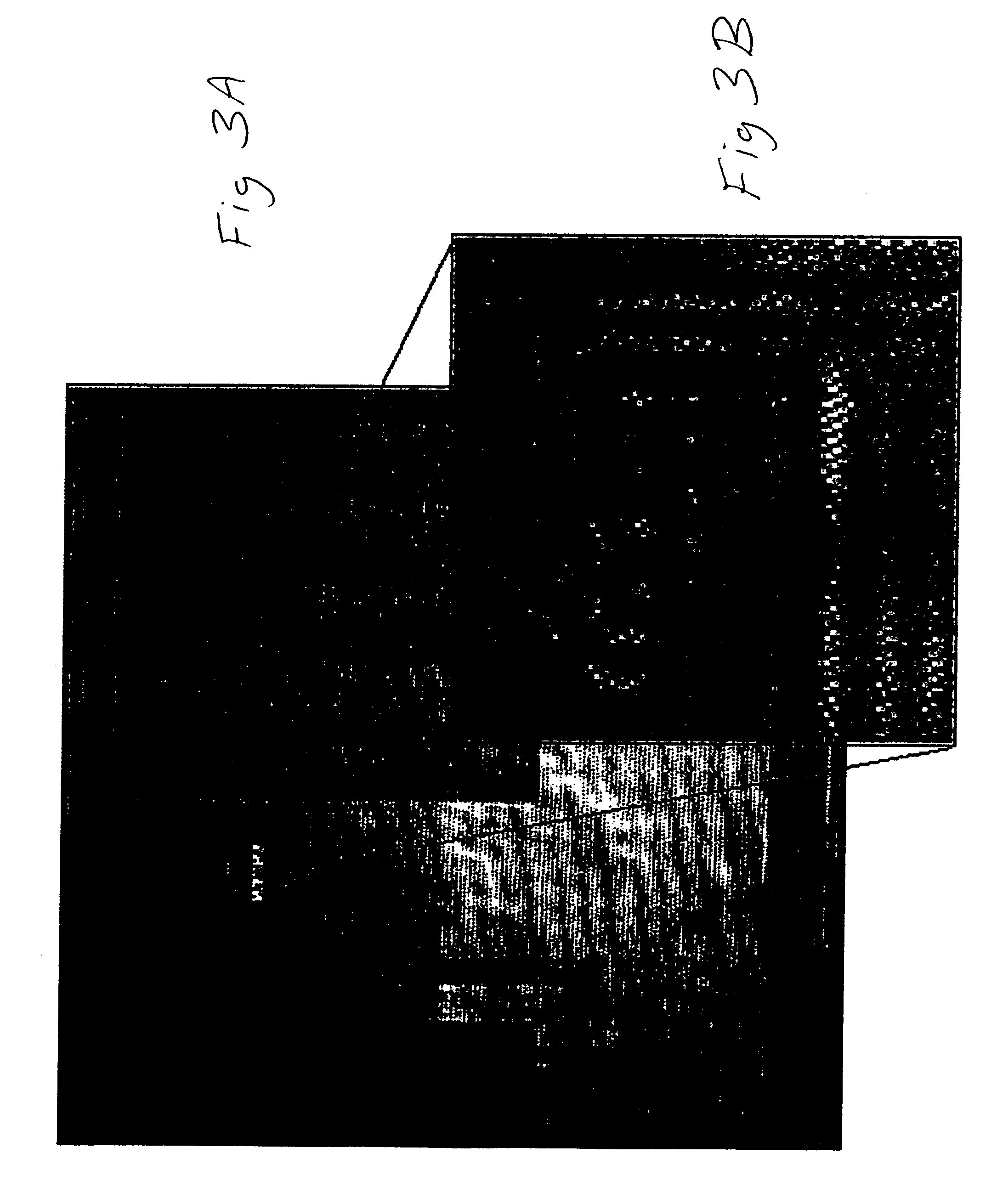Recording multiple spatially-heterodyned direct to digital holograms in one digital image
a digital image and heterodyne technology, applied in the field of recording multiple spatial heterodyned direct to digital holograms in one digital image, can solve the problems of difficulty in tracking the phase change in the object image, the noise in each individual image is not correlated to the noise in the other image, and the error in the measured height of the object, so as to reduce the spread or carryover of information, reduce common-mode or correlated noise, and increase the height range of measurement
- Summary
- Abstract
- Description
- Claims
- Application Information
AI Technical Summary
Benefits of technology
Problems solved by technology
Method used
Image
Examples
example 1
[0110] Referring to FIG. 11, a free space exemplary embodiment of the invention is depicted using reference mirrors. A first laser 1101 operating at a wavelength A, is optically coupled to a beamsplitter 1103. A beamsplitter 1105 is optically coupled to the beamsplitter 1103. An illumination lens 1107 is optically coupled to the beamsplitter 1105. A beamsplitter 1109 is optically coupled to the illumination lens 1107. An imaging lens 1110 is optically coupled to the beamsplitter 1109. An area of a surface of an object 1112 of interest is optically coupled to the imaging lens 1110. An illumination lens 1111 is optically coupled to the beamsplitter 1103. A beamsplitter 1113 is optically coupled to the illumination lens 1111. An imaging lens 1115 is optically coupled to the beamsplitter 1113. A reference mirror 1117 is optically coupled to the imaging lens 1115. A beamsplitter 1119 is optically coupled the beamsplitter 1113.
[0111] Still referring to FIG. 11, a second laser 1121 operati...
example 2
[0112] Referring to FIG. 12, a free space exemplary embodiment of the invention is depicted where reference mirrors are omitted. A helium neon laser 1201 operating at a wavelength of 611.9 nanometers is optically coupled to a variable attenuator 1203. A variable beamsplitter 1205 is optically coupled to the variable attenuator 1203. A spatial filter 1207 is optically coupled to the variable beamsplitter 1205. A collimating lens 1209 is optically coupled to the spatial filter 1207. A beamsplitter 1211 is optically coupled to the collimating lens 1209. An illumination lens 1213 is optically coupled to the beamsplitter 1211. A beamsplitter 1215 is optically coupled to the illumination lens 1213. An objective lens 1217 is optically coupled to the beamsplitter 1215. A target 1219 having a surface area of interest is optically coupled to the objective lens 1217. A tube lens 1220 is optically coupled to the beamsplitter 1215. A spatial filter 1221 is optically coupled to the variable beams...
example 3
[0116] Referring to FIG. 13, an exemplary embodiment of the invention is depicted that uses optical fibers and reference mirrors. A laser 1301 operating at a wavelength of A, is optically coupled to a beamsplitter 1303. An optical fiber 1304 is coupled to the beamsplitter 1303. A beamsplitter 1305 is coupled to the fiber 1304. A fiber 1306 is coupled to the beamsplitter 1305. An illumination lens 1307 is optically coupled to the fiber 1306. A beamsplitter 1309 is optically coupled to the illumination lens 1307. An imaging lens 1311 is optically coupled to the beamsplitter 1309. A object 1313 having an area of interest is optically coupled to the imaging lens 1311. An optical fiber 1315 is coupled to the beamsplitter 1303. An illumination lens 1317 is optically coupled to the fiber 1315. A beamsplitter 1319 is optically coupled to the illumination lens 1317. An imaging lens 1321 is optically coupled to the beamsplitter 1319. A reference mirror 1323 is optically coupled to the imaging...
PUM
 Login to View More
Login to View More Abstract
Description
Claims
Application Information
 Login to View More
Login to View More - R&D
- Intellectual Property
- Life Sciences
- Materials
- Tech Scout
- Unparalleled Data Quality
- Higher Quality Content
- 60% Fewer Hallucinations
Browse by: Latest US Patents, China's latest patents, Technical Efficacy Thesaurus, Application Domain, Technology Topic, Popular Technical Reports.
© 2025 PatSnap. All rights reserved.Legal|Privacy policy|Modern Slavery Act Transparency Statement|Sitemap|About US| Contact US: help@patsnap.com



